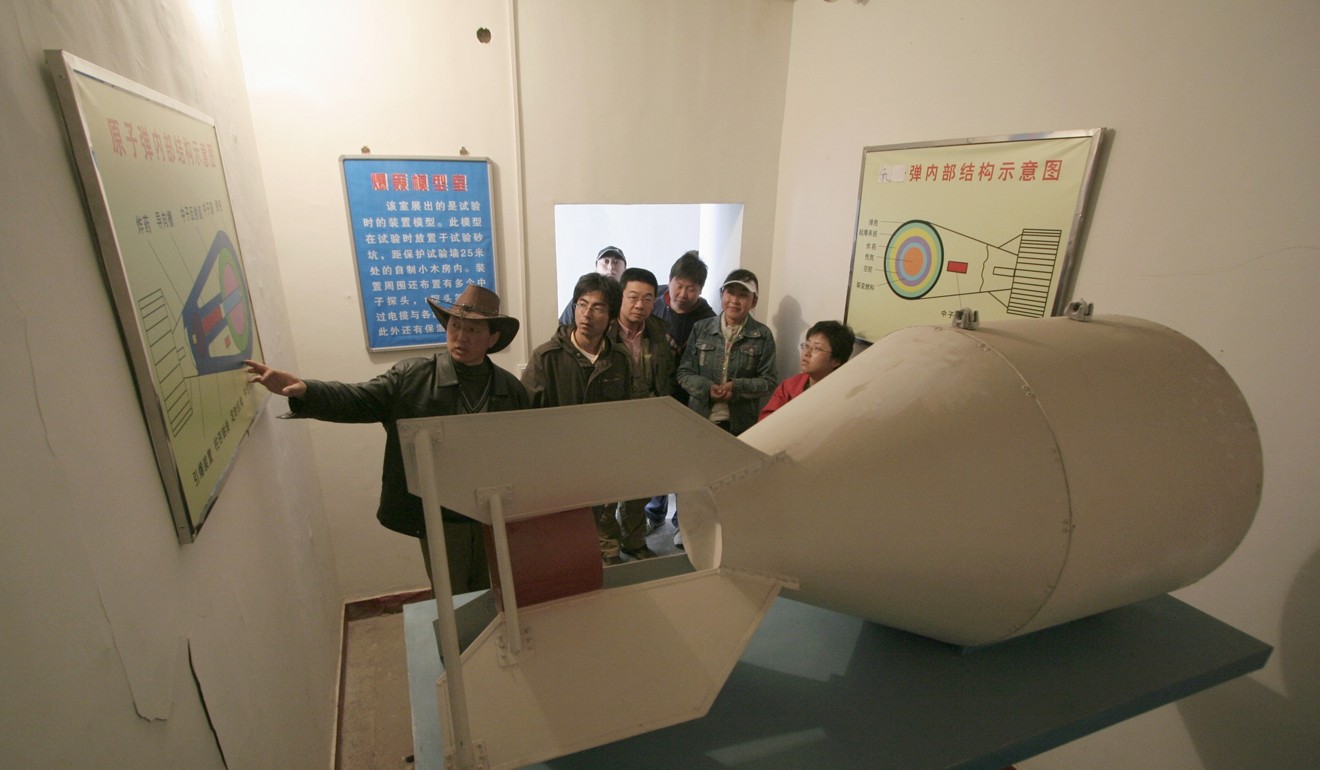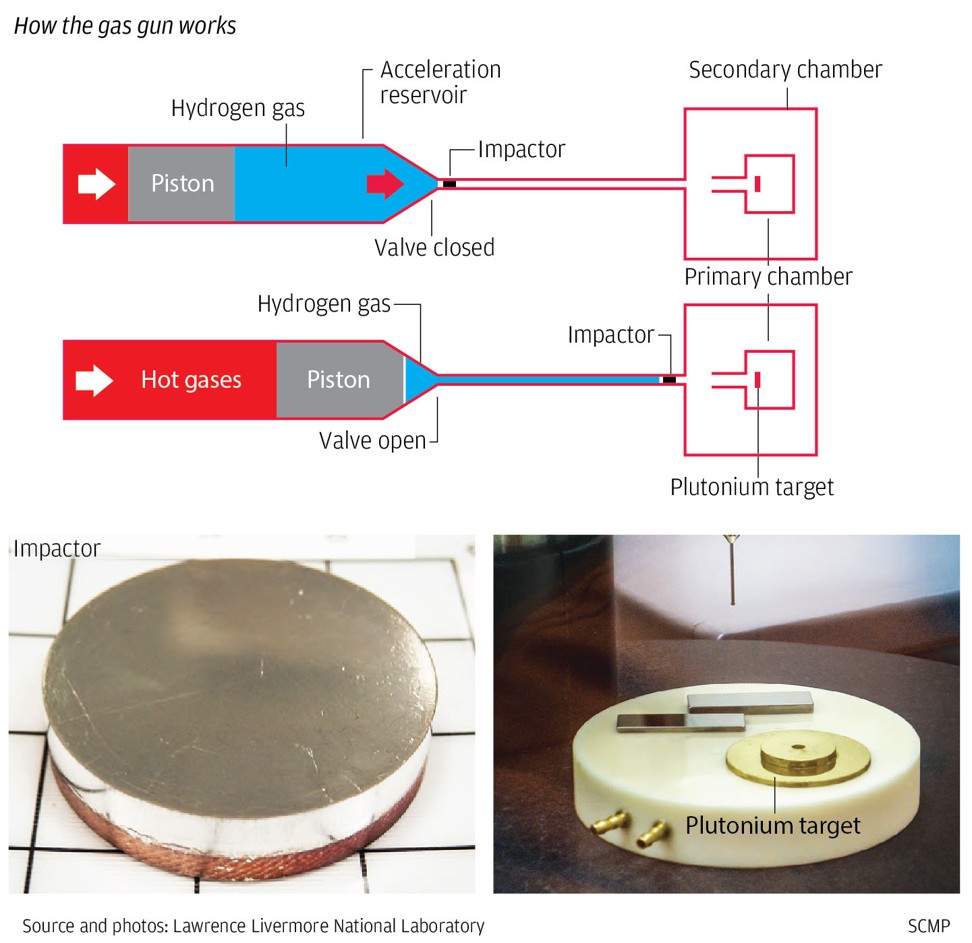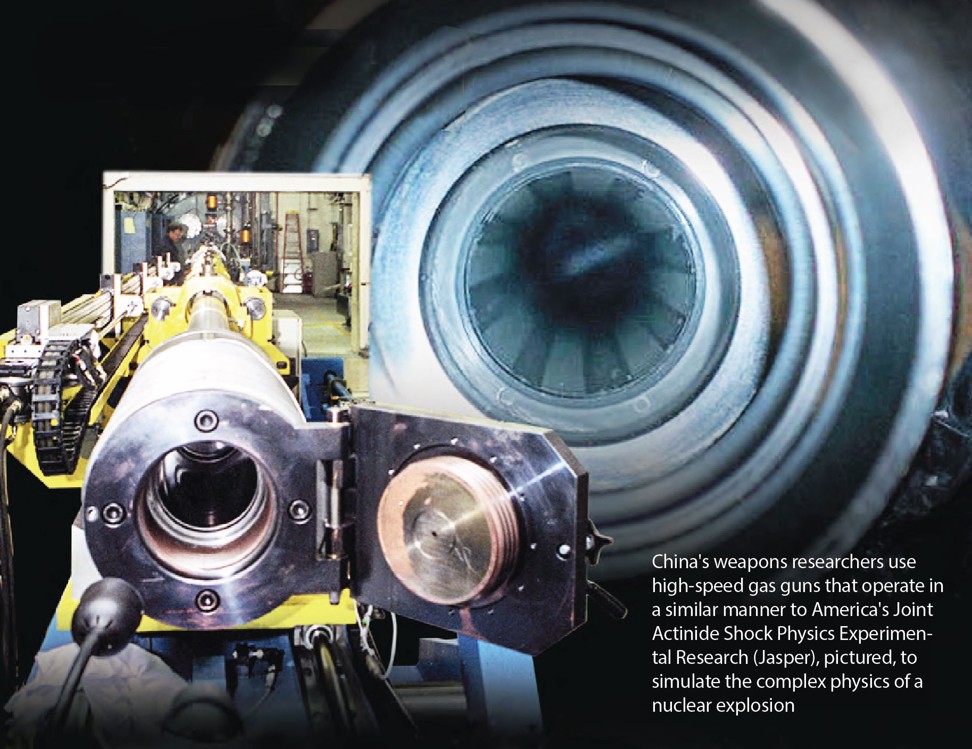Hendrik_2000
Lieutenant General
From SCMP for those critic of China nuclear development thing doesn't always seem like it look
Via broadsword
China is aggressively developing its next generation of nuclear weapons, conducting an average of five tests a month to simulate nuclear blasts, according to a major Chinese weapons research institute.
Its number of simulated tests has in recent years outpaced that of the United States, which conducts them less than once a month on average.
Between September 2014 and last December, China carried out around 200 laboratory experiments to simulate the extreme physics of a nuclear blast, the China Academy of Engineering Physics reported in a document released by the government earlier this year and reviewed by the South China Morning Post this month.
In comparison, the US carried out only 50 such tests between 2012 and 2017 – or about 10 a year – according to the Lawrence Livermore National Laboratory.
As China joins the US and Russia in pursuing more targeted nuclear weapons as a deterrent against potential threats, the looming arms race would in fact serve the opposite purpose by increasing the risk of a nuclear conflict, experts warn.
Pentagon officials have said the US wants its enemies to believe it might actually use its new-generation weapons, such as smaller, smarter tactical warheads designed to limit damage by destroying only specific targets.

But with these relatively safer and less destructive weapons in hand, governments may end up losing the inhibition to use them.
“The use of small warheads will lead to the use of bigger ones,” Beijing-based naval expert Li Jie told the Post.
Still, despite China being highly unlikely to actually deploy its nuclear weapons, it remained necessary to develop them, he said.
“If other countries use nuclear weapons on us, we have to retaliate. This is probably why there is research to develop new weapons.”
Although an international ban prevents nuclear weapons from being tested – with high-profile exceptions like North Korea – the major nuclear powers have been able to continue conducting simulated tests.
Such tests are typically carried out using high-powered gas guns that fire projectiles at weapons-grade materials in laboratories.
Over the past three years, Chinese nuclear scientists have performed more such tests than their American counterparts have in 15 years.
In tunnels deep under mountains in Mianyang, southwestern Sichuan province, where China’s main nuclear design facilities are based, loud blasts from these experiments can be heard more than once a week.
In comparison, between 2003 and 2017, the US fired a total of 150 simulated shots at its Joint Actinide Shock Physics Experimental Research (Jasper) facility at the Nevada National Security Site.

But China’s large number of simulated tests did not mean it was ahead of the US in nuclear weapons development, according to Professor Wang Chuanbin, from the State Key Laboratory of Advanced Technology for Materials Synthesis and Processing at the Wuhan University of Technology.
In fact, its number of live tests paled in comparison with the US, said Wang, whose team supplied the Mianyang research centre, which combines the functions of several leading American nuclear facilities, with critical materials for its experiments.
The US has detonated more than 1,000 nuclear warheads since 1945, when a nuclear bomb was set off for the first time as part of the Manhattan Project.
In contrast, China has carried out only 45 live tests starting from 1964.
“It is possible we are in a hurry to catch up,” Wang said.
However, if China’s intensive tests triggered a new nuclear arms race by spurring counter action from the US, “that would be bad news for everyone”, he added.
But China has likely surpassed the US in some important areas in nuclear weapons research, according to Luo Guoqiang, another researcher at the lab.
“Part of the drive comes from technical breakthroughs, and part from increased financial support from the government,” Luo said.

The tests are conducted using a large, sophisticated facility known as a multi-stage gas gun, which simulates the extreme heat, pressure and shock waves produced in a real nuclear blast.
The experiments with the gas gun provide scientists with the data they need to develop more advanced nuclear weapons.
In the past, researchers used supercomputers to draw on historic data derived from live nuclear tests performed before the international ban was imposed in the 1990s.
But new technology that emerged in recent years, such as hypersonic vehicles and artificial intelligence, opened the door for the development of new nuclear weapons that could be smaller in size and more precise.
These new weapons are considered more “usable” for tactical tasks such as destroying an underground bunker while generating little radioactive fallout.
And while they are not as destructive and cannot obliterate entire cities like their predecessors could, they are still far more powerful than conventional weapons.
Researchers Luo and Wang’s laboratory produces a key component used in the gas gun, known as the graded impactor.
The gun works by using special explosives to force a piston down a hydrogen-filled metal tube.
When the hydrogen gas reaches a certain temperature and pressure, a valve opens to project the impactor at extremely high speeds – of at least 30,000km per hour (18,640mph) – towards a target.
When the impactor hits the target, which is made of the same materials used in nuclear warheads, such as plutonium, the collision produces a chemical reaction similar to that of a nuclear detonation.

Via broadsword
China is aggressively developing its next generation of nuclear weapons, conducting an average of five tests a month to simulate nuclear blasts, according to a major Chinese weapons research institute.
Its number of simulated tests has in recent years outpaced that of the United States, which conducts them less than once a month on average.
Between September 2014 and last December, China carried out around 200 laboratory experiments to simulate the extreme physics of a nuclear blast, the China Academy of Engineering Physics reported in a document released by the government earlier this year and reviewed by the South China Morning Post this month.
In comparison, the US carried out only 50 such tests between 2012 and 2017 – or about 10 a year – according to the Lawrence Livermore National Laboratory.
As China joins the US and Russia in pursuing more targeted nuclear weapons as a deterrent against potential threats, the looming arms race would in fact serve the opposite purpose by increasing the risk of a nuclear conflict, experts warn.
Pentagon officials have said the US wants its enemies to believe it might actually use its new-generation weapons, such as smaller, smarter tactical warheads designed to limit damage by destroying only specific targets.

But with these relatively safer and less destructive weapons in hand, governments may end up losing the inhibition to use them.
“The use of small warheads will lead to the use of bigger ones,” Beijing-based naval expert Li Jie told the Post.
Still, despite China being highly unlikely to actually deploy its nuclear weapons, it remained necessary to develop them, he said.
“If other countries use nuclear weapons on us, we have to retaliate. This is probably why there is research to develop new weapons.”
Although an international ban prevents nuclear weapons from being tested – with high-profile exceptions like North Korea – the major nuclear powers have been able to continue conducting simulated tests.
Such tests are typically carried out using high-powered gas guns that fire projectiles at weapons-grade materials in laboratories.
Over the past three years, Chinese nuclear scientists have performed more such tests than their American counterparts have in 15 years.
In tunnels deep under mountains in Mianyang, southwestern Sichuan province, where China’s main nuclear design facilities are based, loud blasts from these experiments can be heard more than once a week.
In comparison, between 2003 and 2017, the US fired a total of 150 simulated shots at its Joint Actinide Shock Physics Experimental Research (Jasper) facility at the Nevada National Security Site.

But China’s large number of simulated tests did not mean it was ahead of the US in nuclear weapons development, according to Professor Wang Chuanbin, from the State Key Laboratory of Advanced Technology for Materials Synthesis and Processing at the Wuhan University of Technology.
In fact, its number of live tests paled in comparison with the US, said Wang, whose team supplied the Mianyang research centre, which combines the functions of several leading American nuclear facilities, with critical materials for its experiments.
The US has detonated more than 1,000 nuclear warheads since 1945, when a nuclear bomb was set off for the first time as part of the Manhattan Project.
In contrast, China has carried out only 45 live tests starting from 1964.
“It is possible we are in a hurry to catch up,” Wang said.
However, if China’s intensive tests triggered a new nuclear arms race by spurring counter action from the US, “that would be bad news for everyone”, he added.
But China has likely surpassed the US in some important areas in nuclear weapons research, according to Luo Guoqiang, another researcher at the lab.
“Part of the drive comes from technical breakthroughs, and part from increased financial support from the government,” Luo said.

The tests are conducted using a large, sophisticated facility known as a multi-stage gas gun, which simulates the extreme heat, pressure and shock waves produced in a real nuclear blast.
The experiments with the gas gun provide scientists with the data they need to develop more advanced nuclear weapons.
In the past, researchers used supercomputers to draw on historic data derived from live nuclear tests performed before the international ban was imposed in the 1990s.
But new technology that emerged in recent years, such as hypersonic vehicles and artificial intelligence, opened the door for the development of new nuclear weapons that could be smaller in size and more precise.
These new weapons are considered more “usable” for tactical tasks such as destroying an underground bunker while generating little radioactive fallout.
And while they are not as destructive and cannot obliterate entire cities like their predecessors could, they are still far more powerful than conventional weapons.
Researchers Luo and Wang’s laboratory produces a key component used in the gas gun, known as the graded impactor.
The gun works by using special explosives to force a piston down a hydrogen-filled metal tube.
When the hydrogen gas reaches a certain temperature and pressure, a valve opens to project the impactor at extremely high speeds – of at least 30,000km per hour (18,640mph) – towards a target.
When the impactor hits the target, which is made of the same materials used in nuclear warheads, such as plutonium, the collision produces a chemical reaction similar to that of a nuclear detonation.





